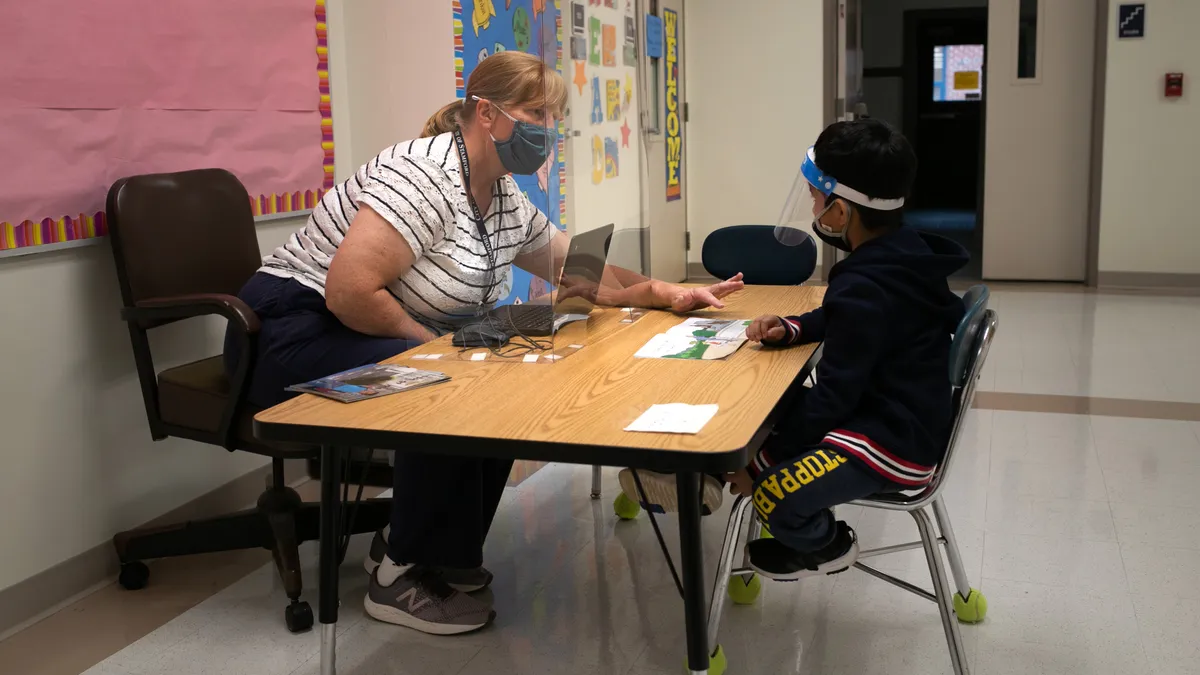Dive Brief:
- When Rehobeth Elementary School in Alabama used specially trained Title I aides rather than paraprofessionals to work with struggling readers, the efforts paid off with some of the highest reading scores among the state's mid- to high-poverty districts, according to an article from The Alabama Education Lab.
- To combat pandemic-driven dips in reading scores, the school is now adding more Title I aides, in addition to after-school tutors and community supports, and working to boost both virtual interventions and K-2 support with the help of federal relief money.
- K-2 has been show to be where the foundation for future learning is built, and the findings of a Duke University study released in June further support the impact teacher assistants and other instructional supports can have on test scores, especially in reading.
Dive Insight:
Getting Alabama students reading at level has become all the more urgent since the state passed a 3rd grade literacy law in 2019 that took effect in the beginning of this school year, requiring children to read at level before they can pass 3rd grade.
Alabama is not alone: Michigan implemented its Read by Grade 3 law in 2016. Since then, reading levels have improved, according to a report from Michigan State University. But while reading scores are higher, some educators have a negative perception of the law, citing the adverse effects of holding a student back.
Along with the Duke study, additional research supports the impact teacher assistants can have in elementary schools, and particularly in reading. An article from The Brookings Institution cited research in North Carolina that found TAs to be a cost-effective means of boosting reading achievement, with a robust and positive impact on students of color and, potentially, in high-poverty schools.
A recent NWEA analysis shows 3rd-graders had larger pandemic declines in math and reading than their older peers. Black and Latinx students also experienced the greatest levels of decline in reading in grades 3-5.
A report from McKinsey & Company shows students of color and those from low-income households are lagging five months behind in math and four months behind in reading year over year. The reading differences between Black and White students were stark: Black students are six months behind, while their White peers are three months behind. Hispanic students were found to be five months behind their typical levels.













